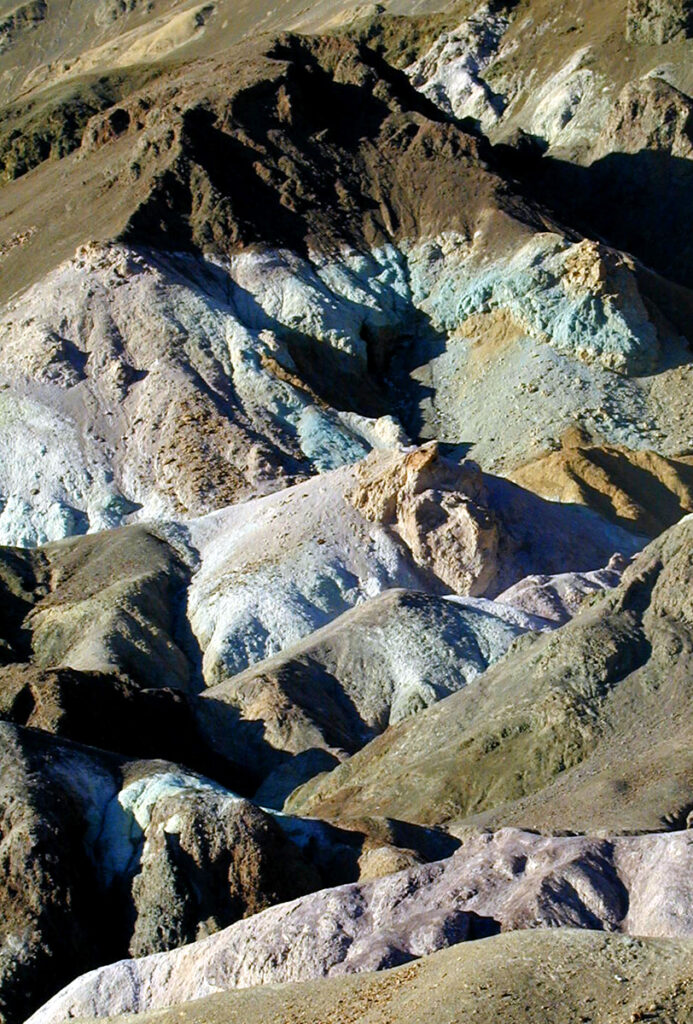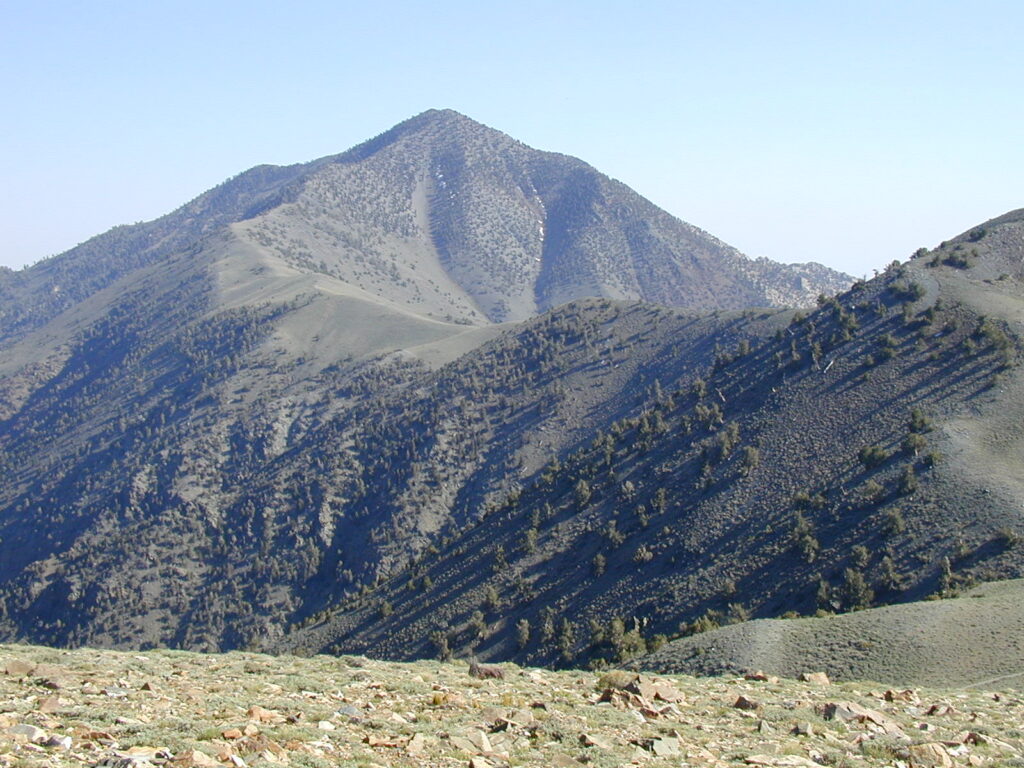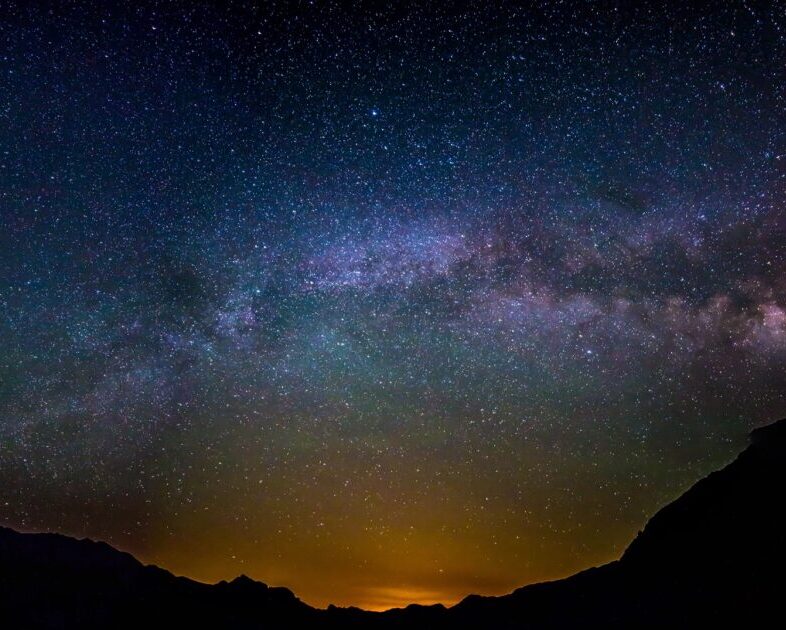
Mesquite Flat Sand Dunes. NPS.
A Land Sculpted by Extremes
Welcome to Death Valley National Park, where California and Nevada meet to form one of Earth’s most extreme environments. Known as the hottest place on the planet and home to North America’s lowest point, Death Valley is a geological marvel shaped over millions of years. This vast desert basin is a living textbook, showcasing dynamic processes from tectonic shifts and volcanic eruptions to relentless erosion and weathering.
Tectonics and Time
At the core of Death Valley’s dramatic landscape is extensional tectonics. Here, the Earth’s crust stretches and thins, causing land blocks to sink and form deep basins surrounded by towering mountain ranges. This ongoing process is part of the larger Basin and Range Province, characterized by alternating valleys and mountains created by normal faulting. Death Valley itself is subsiding at roughly one inch per year, a testament to the powerful tectonic forces at work.
Located near the boundary where the Pacific Plate slides past the North American Plate, Death Valley is seismically active. Earthquakes periodically reshape the landscape by moving faults and altering the valley’s structure.
Over 500 million years ago, during the Paleozoic Era, this region was submerged under a warm, shallow sea. As tectonic forces uplifted the land, the sea receded, and new environments emerged. Volcanic activity added another layer of complexity, creating features like Ubehebe Crater-a maar volcano formed by explosive interactions between magma and groundwater. This crater, approximately 600 feet deep and half a mile wide, may be as young as 800 years old, offering insights into volcanic processes in arid regions.
Erosion, Deposition, and Mineral Wonders
Death Valley’s surface is dynamic, shaped by erosion and deposition. Wind and water play significant roles in molding the terrain. The Mesquite Flat Sand Dunes are prime examples of wind’s power, with grains eroded from surrounding mountains forming dunes that rise over 100 feet high and constantly shift with desert winds. These dunes illustrate the processes of sediment transport and deposition in an arid environment.
Water leaves lasting marks through flash floods that carve canyons and gullies, revealing layers of rock and sediment. Locations like Golden Canyon allow visitors to walk through a maze of eroded badlands, where stratified sediments display a stunning array of colors and textures.
Badwater Basin, at 282 feet below sea level, is the lowest point in North America. This vast salt flat was created by the evaporation of ancient lakes, leaving behind thick crusts of halite (sodium chloride) that stretch for miles. Walking across the hexagonal salt polygons offers a unique experience of desolation and beauty.
Death Valley’s mineral diversity adds to its geological richness. Beyond salt, the area is abundant in minerals like borates and unique species not found elsewhere on Earth. The vibrant colors seen in formations like Artist’s Palette are the result of metal oxidation within the rocks, with iron compounds producing reds and yellows and decomposing mica yielding greens. These colors not only enhance the landscape’s visual appeal but also provide clues about the chemical processes occurring beneath the surface.

Artist’s Palette. NPS.

Telescope Peak. NPS.
A Matrix of Earth's Processes
Death Valley is a testament to Earth’s dynamic nature, with its rugged terrain recording millions of years of geological history. From the depths of Badwater Basin to the peaks of Telescope Peak (over 11,000 feet), the valley showcases an incredible range of geological phenomena. Each rock layer, fossil, and landform is a chapter in the ongoing story of our planet.
Death Valley National Park is dedicated to protecting these unique geological features, ensuring that they remain intact for future generations. Conservation efforts allow for both scientific study and public enjoyment, fostering a deeper appreciation for this remarkable landscape.


